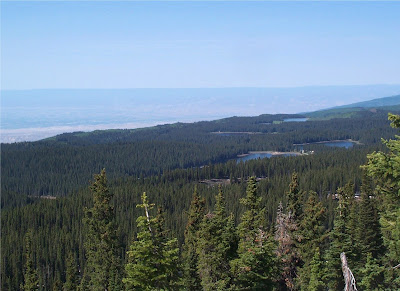From Dinosaur National Monument, we camped at Flaming Gorge National Recreation Area, which was far from impressive. So, the next day we cruised north into Wyoming and straight up toward Jackson Hole and Grand Teton National Park.
Bridger-Teton National Forest in Western Wyoming
We camped in the national forest area just above Jackson Hole with spectacular views across the valley to the Teton Mountains. This was one of the best campsites we'd been at in the entire trip. It was dispersed camping on soft grass, it was free, and the views were excellent. From there, we did a lovely day hike in the Gros Ventre Wilderness to the near alpine Goodwin Lake.
The Gros Ventre Mountains from the campsite at dusk
There were some really nice mountain meadows full of wildflowers in the early part of the hike. At this elevation, Ponderosa pines still dominate, with plentiful balsam roots in bloom. Later, we entered a forest of aspen and Engelmann spruce at higher elevations near 10,000 feet.
White Columbines
Several miles in I saw what appeared to be a gray wolf flash across the trail. I can't be sure since it was so fast. Maybe it was a large gray coyote. But, this is wolf country and at these elevations, that seems to be the more likely scenario. Nonetheless, neither Maile or Linda seemed to notice, so who knows.
Here we've arrived at Goodwin Lake. It was heavily forests along the shores, so this was the only place I could get a good view across to the talus slopes on the otherside.
Here, Linda relaxing back at the campsite at dusk


























































